Giovanni Bellini (1430 – 1516)
Get a Giovanni Bellini (1430 – 1516) Certificate of Authenticity for your painting (COA) for your Giovanni Bellini (1430 – 1516) drawing.
For all your Giovanni Bellini (1430 – 1516) artworks you need a Certificate of Authenticity (COA) in order to sell, to insure or to donate for a tax deduction.
Getting a Giovanni Bellini (1430 – 1516) Certificate of Authenticity (COA) is easy. Just send us photos and dimensions and tell us what you know about the origin or history of your Giovanni Bellini (1430 – 1516) painting or drawing.
If you want to sell your Giovanni Bellini (1430 – 1516) painting or drawing use our selling services. We offer Giovanni Bellini (1430 – 1516) selling help, selling advice, private treaty sales and full brokerage.
We have been authenticating Giovanni Bellini (1430 – 1516) and issuing certificates of authenticity since 2002. We are recognized Giovanni Bellini (1430 – 1516) experts and Giovanni Bellini (1430 – 1516) certified appraisers. We issue COAs and appraisals for all Giovanni Bellini (1430 – 1516) artworks.
Our Giovanni Bellini (1430 – 1516) paintings and drawings authentications are accepted and respected worldwide.
Each COA is backed by in-depth research and analysis authentication reports.
The Giovanni Bellini (1430 – 1516) certificates of authenticity we issue are based on solid, reliable and fully referenced art investigations, authentication research, analytical work and forensic studies.
We are available to examine your Giovanni Bellini (1430 – 1516) painting or drawing anywhere in the world.
You will generally receive your certificates of authenticity and authentication report within two weeks. Some complicated cases with difficult to research Giovanni Bellini (1430 – 1516) paintings or drawings take longer.
Our clients include Giovanni Bellini (1430 – 1516) collectors, investors, tax authorities, insurance adjusters, appraisers, valuers, auctioneers, Federal agencies and many law firms.
We perform Giovanni Bellini art authentication, appraisal, certificates of authenticity (COA), analysis, research, scientific tests, full art authentications. We will help you sell your Giovanni Bellini or we will sell it for you.
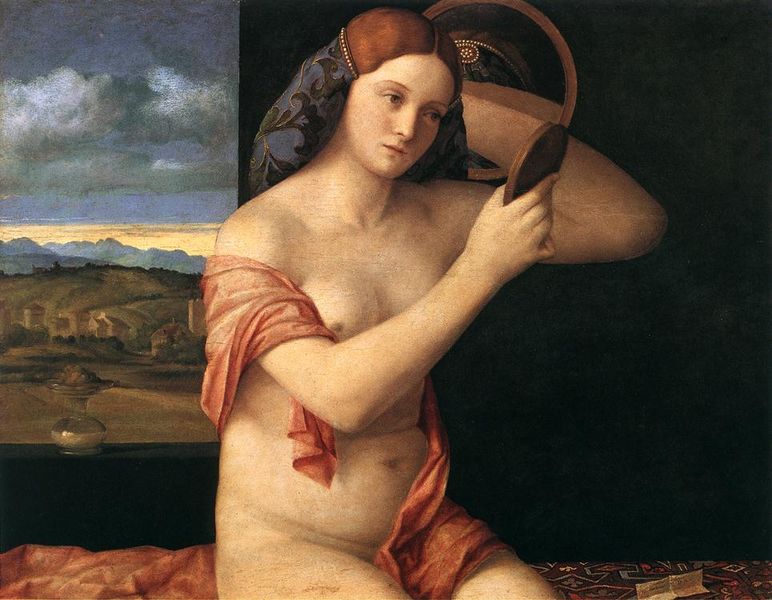
Giovanni Bellini was an Italian Renaissance painter, probably the best known of the Bellini family of Venetian painters. His father was Jacopo Bellini, his brother was Gentile Bellini, and his brother-in-law was Andrea Mantegna. He is considered to have revolutionized Venetian painting, moving it towards a more sensuous and colorful style. Through the use of clear, slow-drying oil paints, Giovanni created deep, rich tints and detailed shadings. His sumptuous coloring and fluent, atmospheric landscapes had a great effect on the Venetian painting school, especially on his pupils Giorgione and Titian.
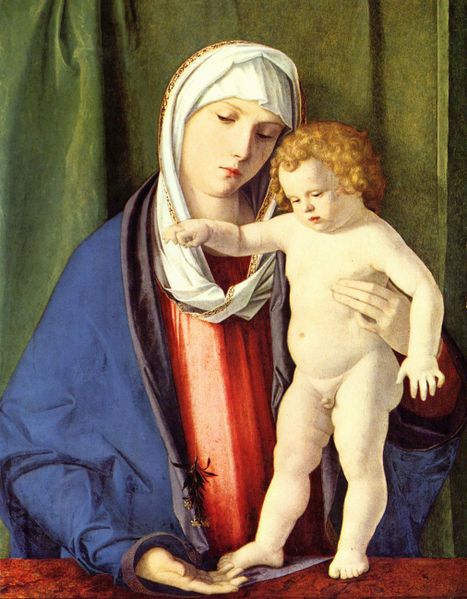
Giovanni Bellini was probably born in Venice. He was brought up in his father’s house, and always lived and worked in the closest fraternal relation with his brother Gentile. Up until the age of nearly thirty we find evidence of a depth of religious feeling and human pathos which is his own. They are all executed in the old tempera method; and in the last named the tragedy of the scene is softened by a new and beautiful effect of romantic sunrise color.
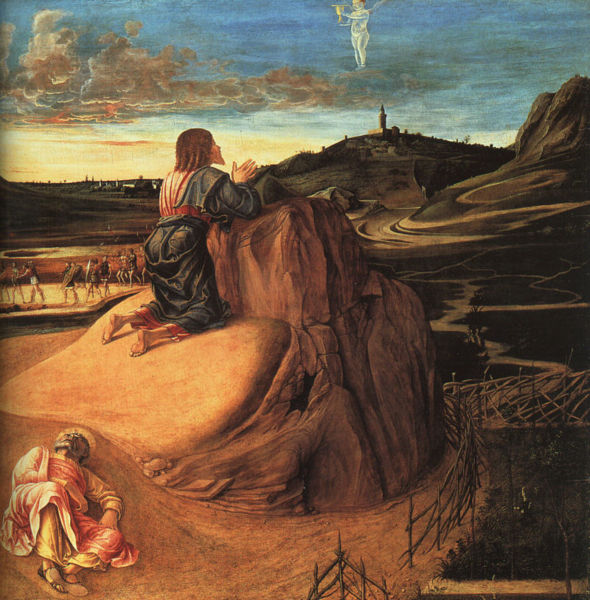
In a somewhat changed and more personal manner, with less harshness of contour and a broader treatment of forms and draperies, but not less force of religious feeling, are the two pictures of the Dead Christ supported by Angels, in these days one of the master’s most frequent themes, at Rimini and at Berlin. Two Madonnas, still executed in tempera, are no doubt earlier than the date of Giovanni’s first appointment to work along with his brother and other artists in the Scuola di San Marco, where among other subjects he was commissioned in 1470 to paint a Deluge with Noah’s Ark. None of the master’s works of this kind, whether painted for the various schools or confraternities or for the ducal palace, have survived.

To the decade following 1470 must probably be assigned a Transfiguration now in the Naples museum, repeating with greatly ripened powers and in a much serener spirit the subject of his early effort at Venice; and also the great altarpiece of the Coronation of the Virgin at Pesaro, which would seem to be his earliest effort in a form of art previously almost monopolized in Venice by the rival school of the Vivarini. Probably not much later was the still more famous altarpiece painted in tempera for a chapel in the church of S. Giovanni e Paolo, where it perished along with Titian’s Peter Martyr and Tintoretto’s Crucifixion in the disastrous fire of 1867. Giovanni’s tender image of S. Giustina de’ Borromeis (ca. 1475) is at the Bagatti Valsecchi Museum in Milan, Italy.
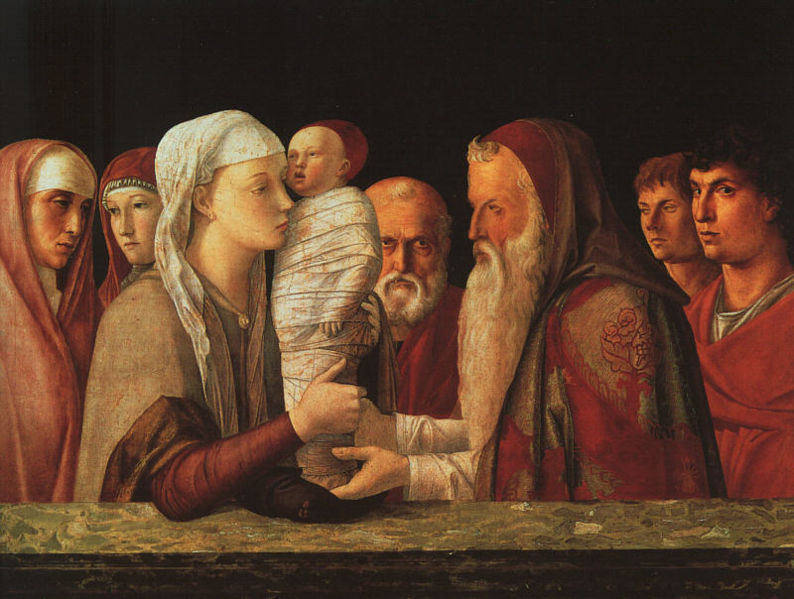
After 1479-1480 very much of Giovanni’s time and energy must have been taken up by his duties as conservator of the paintings in the great hall of the ducal palace, in payment for which he was awarded, first the reversion of a broker’s place in the Fondaco dei Tedeschi, and afterwards, as a substitute, a fixed annual pension of eighty ducats. Besides repairing and renewing the works of his predecessors he was commissioned to paint a number of new subjects, six or seven in all, in further illustration of the part played by Venice in the wars of Frederick Barbarossa and the pope. These works, executed with much interruption and delay, were the object of universal admiration while they lasted, but not a trace of them survived the fire of 1577; neither have any other examples of his historical and processional compositions come down, enabling us to compare his manner in such subjects with that of his brother Gentile.
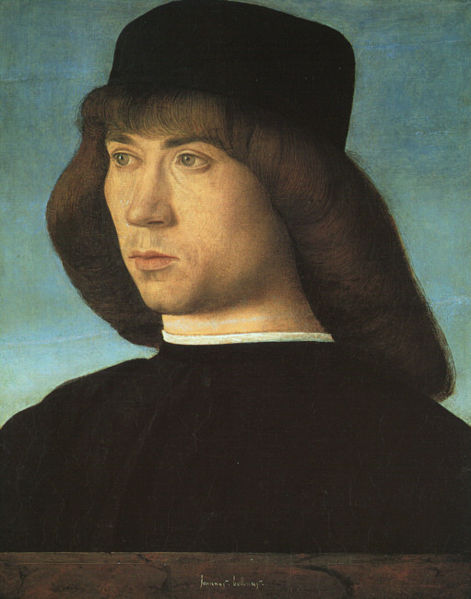
Of the other, the religious class of his work, including both altarpieces with many figures and simple Madonnas, a considerable number have fortunately been preserved. They show him gradually throwing off the last restraints of the Quattrocento manner; gradually acquiring a complete mastery of the new oil medium introduced in Venice by Antonello da Messina about 1473, and mastering with its help all, or nearly all, the secrets of the perfect fusion of colors and atmospheric gradation of tones. The old intensity of pathetic and devout feeling gradually fades away and gives place to a noble, if more worldly, serenity and charm. The enthroned Virgin and Child become tranquil and commanding in their sweetness; the personages of the attendant saints gain in power, presence and individuality; enchanting groups of singing and viol-playing angels symbolize and complete the harmony of the scene. The full splendor of Venetian color invests alike the figures, their architectural framework, the landscape and the sky.

An interval of some years, no doubt chiefly occupied with work in the Hall of the Great Council, seems to separate the altarpieces of the Frari, of San Giobbe, and of the church of San Zaccaria at Venice. In the latter he depicts the Virgin with the kneeling doge Barbarigo at Murano, which is perhaps the most beautiful and imposing of all, and is dated 1505, the year following that of Giorgione’s Madonna of Castelfranco. Another great altarpiece with saints, that of the church of San Francesco de la Vigna at Venice, belongs to 1507; that of La Corona at Vicenza, a Baptism of Christ in a landscape, to 1510; to 1513 that of San Giovanni Crisostomo at Venice, where the aged Saint Jerome, seated on a hill, is raised high against a resplendent sunset background, with SS. Christopher and Augustine standing facing each other below him, in front.
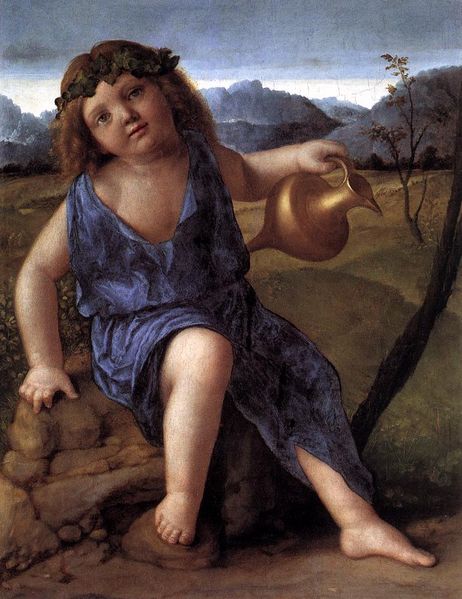
Of Giovanni’s activity in the interval between the altarpieces of San Giobbe and of Murano and that of San Zaccania, there are a few pieces of evidence left, though the great mass of its results perished with the fire of the Doge’s Palace in 1577. The last ten or twelve years of the master’s life saw him besieged with more commissions than he could well complete. Already in the years 1501-1504 the marchioness Isabella Gonzaga of Mantua had had great difficulty in obtaining delivery from him of a picture of the Madonna and Saints (now lost) for which part payment had been made in advance. In 1505 she endeavored through Cardinal Bembo to obtain from him another picture, this time of a secular or mythological character. What the subject of this piece was, or whether it was actually delivered, we do not know.
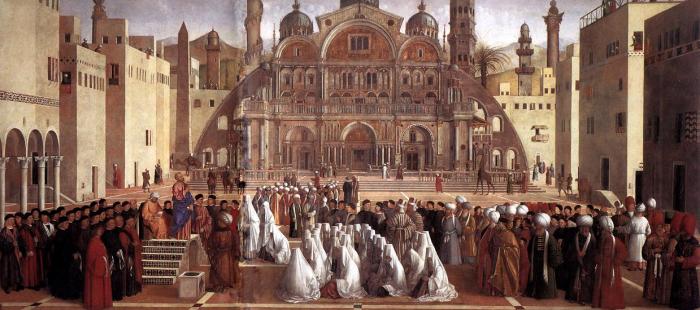
Albrecht Dürer, visiting Venice for a second time in 1506, describes Giovanni Bellini as still the best painter in the city, and as full of all courtesy and generosity towards foreign brethren of the brush. In 1507 Gentile Bellini died, and Giovanni completed the picture of the Preaching of St. Mark which he had left unfinished; a task on the fulfillment of which the bequest by the elder brother to the younger of their fathers’ sketch-book had been made conditional. In 1513 Giovanni’s position as sole master (since the death of his brother and of Alvise Vivarini) in charge of the paintings in the Hall of the Great Council was threatened by the desire of his own former pupil, Titian, for a share of the same undertaking, to be paid for on the same terms. Titian’s application was granted, then after a year rescinded, and then after another year or two granted again; and the aged master must no doubt have undergone some annoyance from his sometime pupil’s proceedings. In 1514 Giovanni undertook to paint The Feast of the Gods for the duke Alfonso I of Ferrara, but died in 1516. It is believed that he left ‘Feast’ to be finished by his pupils but in truth he finished it. Titian later painted a different background over Bellini’s original one; which is the one we see today. This picture is now at the National Gallery of Art in Washington, DC.
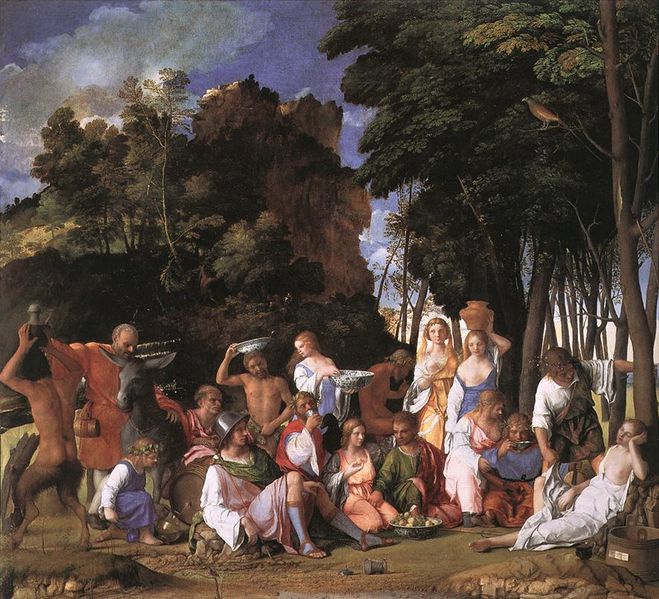
Both in the artistic and in the worldly sense, the career of Giovanni Bellini was, on the whole, very prosperous. His long career began with Quattrocento styles but matured in to the progressive post-Giorgione Renaissance styles. He lived to see his own school far outshine that of his rivals, the Vivarini of Murano; he embodied, with growing and maturing power, all the devotional gravity and much also of the worldly splendor of the Venice of his time; and he saw his influence propagated by a host of pupils, two of whom at least, Giorgione and Titian, surpassed their master. Giorgione he outlived by five years; Titian, as we have seen, challenged an equal place beside his teacher. Other pupils of the Bellini studio included Girolamo da Santacroce, Vittore Belliniano, Rocco Marconi, and Andrea Previtali.
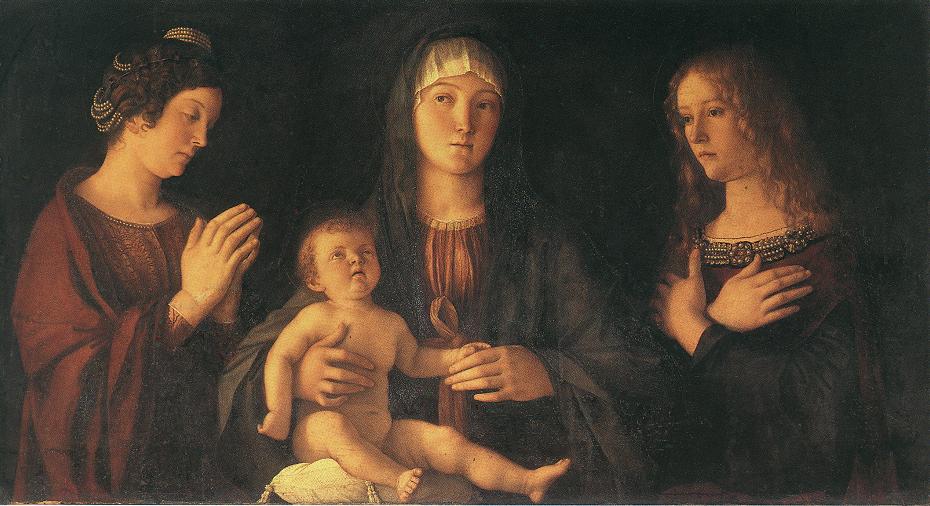
In the historical perspective, Bellini was essential to the development of the Italian Renaissance for his incorporation of aesthetics from Northern Europe. Significantly influenced by Antonello da Messina, who had spent time in Flanders, Bellini made prevalent both the use of oil painting, different from the tempera painting being used at the time by most Italian Renaissance painters, and the use of disguised symbolism integral to the Northern Renaissance. As demonstrated in such works as St. Francis in Ecstasy (c. 1480) and the San Giobbe Altarpiece (c. 1478), Bellini makes use of religious symbolism through natural elements, such as grapevines and rocks. Yet his most important contribution to art lies in his experimentation with the use of color and atmosphere in oil painting.
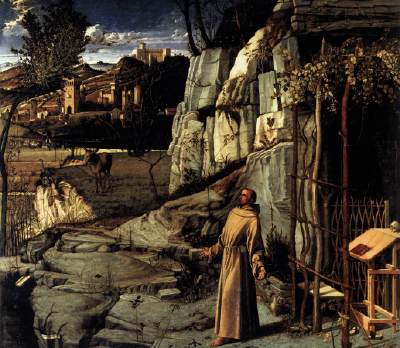
Reviews
1,217 global ratings
5 Star
4 Star
3 Star
2 Star
1 Star
Your evaluation is very important to us. Thank you.
